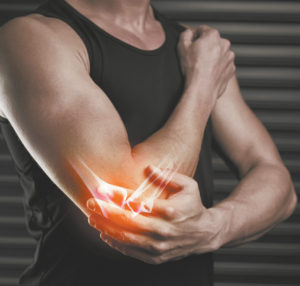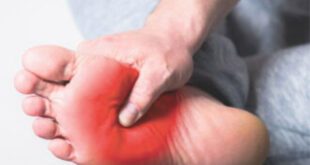Christopher Manseau M.D.
 You often hear people wincing in pain when they hit their “funny bone.” The funny thing is that the so-called funny bone is neither a bone nor is it funny. It’s actually the ulnar nerve that sits just behind the elbow and down into the back of the forearm. The ulnar nerve controls small motor functions in the hand and forearm, as well as the sensations of the forth and fifth fingers.
You often hear people wincing in pain when they hit their “funny bone.” The funny thing is that the so-called funny bone is neither a bone nor is it funny. It’s actually the ulnar nerve that sits just behind the elbow and down into the back of the forearm. The ulnar nerve controls small motor functions in the hand and forearm, as well as the sensations of the forth and fifth fingers.
If you have golfer’s elbow or medial epicondylitis you may also be suffering from an injury to the ulnar nerve or compression at the medial elbow or cubital tunnel syndrome. Surgical decompression of the nerve to free it from its area of entrapment may be necessary to allow the nerve to heal and allow the hand to recover its function. The surgery is quite details and requires an experienced orthropedic surgeon in order to optimize the outcome. The recovery from the surgery is fairly straight forward and occupational therapy is generally recommended to maximize the recovery of function. You can rest assured that you will be feeling much less pain or pain-free in a short while after the procedure is complete.
When the elbow pain symptoms are more severe, persistent and painful, generally arthritis is involved. Surgeries like total elbow arthroplasty or radial head replacement may be necessary to address the injuries of fractures, degenerative arthritis, or dislocations.
The elbow is made up of three bones:
• Radius (medial forearm toward thumb)
• Ulna (distal forearm toward pinky)
• Humerus (upper arm)
Muscles, tendons, and ligaments encompass the elbow joint and join the three bones together.
Elbow Replacement Surgery
An artificial elbow, available in partial, total, and various sizes will be fitted into the damaged bones of the elbow. The artificial joint is made up of metal and plastic to act as the synovial fluid and to allow smooth flexion and bending movements from the elbow. The stems are made up of metal and are placed into the canal of the bones and fixed with a material that allows natural bone regeneration to occur around and through the artificial joint.
After your surgery, you will need to rest and heal for several weeks to several months. Your surgeon may recommend physical therapy or occupational therapy to help you rebuild bone, strengthen your arm, and to perform daily tasks. Trusting your joints and bone health to a qualified, experienced surgeon is imperative. Dr. Manseau has extensive experience with joint replacement surgery.
Christopher Manseau M.D.
Fellowship Trained
Board Certified Orthopaedic Surgeon
Fellow American Academy of Orthopaedic Surgeons
Earning his medical degree in 1991 from Tufts University School of Medicine, Dr. Manseau has over 25 years of experience in the practice of orthopaedic medicine. Dr. Manseau is a board-certified orthopaedic surgeon and a Fellow of the Academy of Orthopedic Surgery.
Dr. Manseau has practiced in North Central Florida since 1997. In 2006, he established Orthopaedic Specialty Care (OSC) to further his desire to provide the ultimate in personalized care. This emphasis on individualized medicine earned him the Compassionate Doctor Award in 2011, 2012, 2013, and 2015.
Based in Ocala, Florida, OSC provides comprehensive surgical and nonsurgical solutions to the wide range of orthopaedic issues confronting all ages.
To schedule your consultation, please call (352) 624-0004.
352.624.0004 | www.oscllc.net
Check Also
Revolutionizing Neuropathy Treatment: The Summus Laser Approach at LaserLab
Neuropathy, a condition affecting an estimated 42.5 million Americans, can significantly impact one’s quality of …
 Central Florida Health and Wellness Magazine Health and Wellness Articles of the Villages
Central Florida Health and Wellness Magazine Health and Wellness Articles of the Villages



